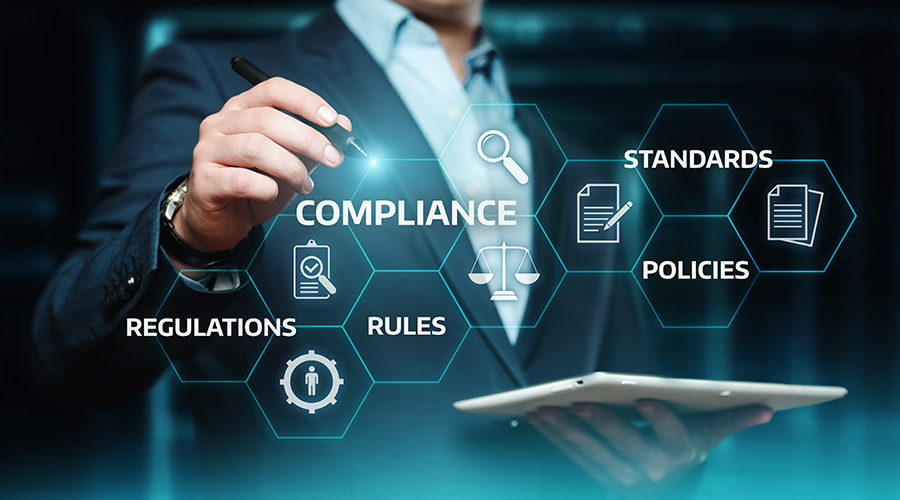How Facility Management Impacts Occupant Experience
Effective facility management enhances customer experience and productivity, influencing business success and competitive advantage.
By John Rimer, Facility Influencer
Facility management and related services arguably have a greater impact on customer experience and occupant productivity than any other department within a building or campus. Granted, as a facility practitioner, I may be a bit biased, but, as you will see in the following examples, my statement is sound and difficult to counter.
To make my case, let us put ourselves in the shoes of a site visitor.
Tale 1
As you are driving down the street, keeping one eye on the surrounding traffic and another dodging between your map app and the stream of colorful signs, you think, “Aha, there it is!” You can clearly see the destination’s marquee, confirmed by the legible street address. You carefully pull into the lot trying to discern where to park. You gleefully see a welcoming sign steering you to the visitor’s parking right up front. As you pull in, the parking spaces are clearly labeled with lines that seem freshly painted. “Perfect!” you exclaim to yourself, as you see a front spot for electric vehicles.
After plugging in your EV, you stroll to the front door admiring the nicely trimmed lawn and colorful landscaping.
Upon entering, you are warmly welcomed by security who eagerly helps you get signed in and informs you that your contact is on their way. Security then directs you to the restrooms and points out the refreshing beverage station that you can enjoy as you wait for your appointment.
As you ease into the comfortable chair, sipping your warm cup of coffee, you glance around quietly noticing the various company awards, values statement, and employee appreciation plaques.
Upon finishing your coffee, you excuse yourself down the brightly lit hallway to freshen up in the restroom. The restroom is clean and well-stocked. As you exit, you indicate your satisfaction with the space on the electronic interface by the door.
Back in the lounge, again greeted with a smile by security, your contact welcomes you and escorts you to the nearby meeting room.
As you approach the meeting room, you note the electronic conference management console displaying the name and duration of the appointment. Upon entering, the other guests extend their hand and introduce themselves. You sit down in the comfortable executive chair and easily adjust the settings.
You pull out your laptop and plug the charger into one of the ample ports in the table center. The host wirelessly connects to the monitor at the end of the room. You settle in ready to hear their pitch on how they can improve your business processes.
Now that is a good way to start a meeting. However, it is rare to enjoy that type of experience. To further our bold statement above, let us reverse this and pull into another facility down the road.
Tale 2
Driving down the road, you faintly make out the logo on the sun-faded sign and abruptly turn into the poorly lit drive. Trying to confirm the address, you can see the shadowed spot where the last digit of the address used to reside.
You struggle to navigate the alligatored parking lot, trying to discern the front entrance amongst the stream of algae-covered brick storefronts with doorways blocked by overgrown shrubbery. Finally, there is a spot in the back under a drastically overhung tree, dripping sap onto your freshly cleaned car.
Stepping over the crumbled curbing, you work your way along the sidewalk, stepping around a muddy puddle caused by the broken sprinkler head. Nearing the door, you disappointingly make out the old visitor parking sign which has now become one with the bush that consumed it. Rolling your eyes at the hidden sign, you stub your foot on the uneven sidewalk and fumble your coffee onto your white dress shirt.
In the dated foyer, you head to the security desk. You ask where the restroom is. The guard’s head partially lifts up from their cellphone, and their arm points to a shadowy hallway behind them.
After guessing incorrectly on a few doors, you find the restroom. You quickly move to the paper towel dispenser so that you can attempt to clean the spilled coffee from your shirt. Realizing that the dispenser is empty, you move to the one on the other side; it has paper, but it is jammed. Desperate, you open the stall to grab some toilet paper and find none. Trying the other stall, you pull the last few squares to spare.
At the sink, you start to feel invisible as the motion sensing faucet is not turning on. After a few more hand jives, finally, some water. You dampen the tissue and begin dabbing the coffee stain. You are trying not to be annoyed by the squeaky exhaust fan as you attempt to determine with the drab lighting if you are making any progress or not. Frustrated, you exit back to the lobby.
Waiting for your host to show up, you squirm in the rickety 1990-something torture chair. You start looking around, attempting to guess if the paint used to be white or if it has always been that shade of greige. You hypothesize that the color is likely thrown off by the mix of warm and cool bulbs buzzing from the ceiling grid. You wince at the dark substance peppering the supply vents, praying that it is dirt and not mold.
Finally, after what seems like a lifetime, your host leads you back to the meeting rooms. As you approach the meeting room, it appears the space has been double-booked.
Finally, they find an open space and employ squatter’s rights. Entering the stuffy room, all start playing a game of musical chairs. Realizing you are left standing, the host darts to the adjacent office to borrow a chair.
Squeezing by the seated attendees, you make your way to the borrowed chair, being careful not to trip over the spaghetti of cords strewn about the floor. You then pull out your laptop and look for a free outlet. Realizing that you were late to the party, you rely on your battery to get through the meeting.
Once introductions are complete, you attempt to inconspicuously wipe the sweat from your brow and loosen your tie in an effort to keep from boiling over from the heat. Thankfully, you hear the squeak of the distant air handler and feel the slight vibration of the fan; relief is on its way. Unfortunately, that relief comes with the howling of air from the dirty supply grille, making it difficult to hear the presentation.
Afterwards, you navigate your way back to daylight. Dodging the obstacles and tripping hazards, you wrestle the tree hugging your car and fall into the driver’s seat with a sigh. And you think, “How can I trust my business to a company that cannot even maintain a building or host an intelligible meeting?”
A facility manager can make all the difference
While these two experiences are a bit extreme, they are not unrealistic. I am sure many of you could relate all too painfully to facets of the second meeting.
So, what is the point of these two narratives? How does this help you in your struggles to operate, maintain, and improve your facilities? Allow me to ask a few more questions.
What if this was an interested business investor? Or perhaps, a potential employee or customer? Where would they choose to invest, work, or spend their money?
In this competitive marketplace, facilities and related services can either be an advantage or an obstacle. Instead of focusing on the cost to maintain and replace, emphasize the greater cost to the organization of not investing in their buildings and the services provided, because their impact will play a significant role in the outcome of your company’s story.
John Rimer is president and a senior consultant with FM360, LLC. He is a mechanical engineer with more than 25 years of facility management experience. He has implemented and managed facility programs for numerous companies, including Intel, Microsoft, JP Morgan Chase, and Charles Schwab. Over the years he has worked in numerous sectors, including corporate campus, data centers, biotech/pharmaceutical, higher education, K-12, healthcare, manufacturing, municipalities, state, and federal government.
Related Topics:












